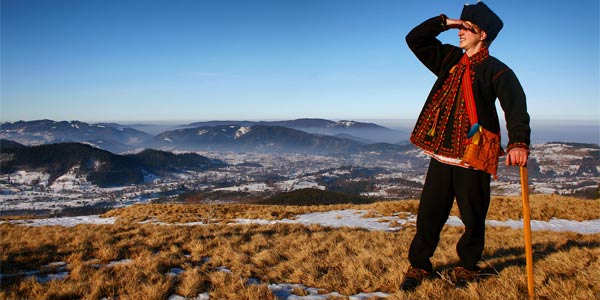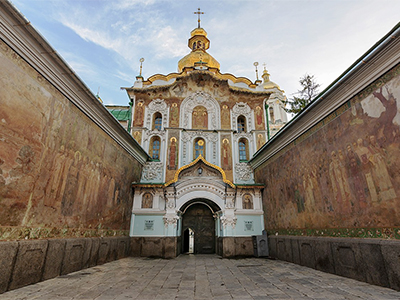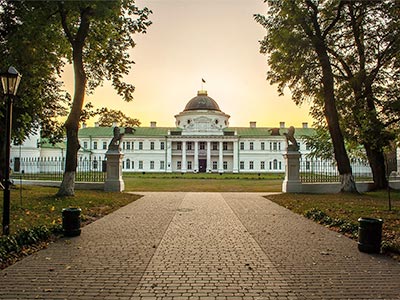 20.04.2018
Kosmach
20.04.2018
KosmachKosmach is a unique village in Hutsulshchyna.
The first written record of Kosmach is dated 1412. The village was called after its first settler’s look, which had shaggy hair (ukr. – kosmate). Folk legends told also that a man with name Kosmachuk was the first inhabitant of Kosmach. Today such a name does not exist in Kosmach.
Numerous archival materials affirm Kosmach to be one of the oldest settlements of Hutsulshchyna.
Folk legends and tales refer Kosmach’s foundation back to Kyiv Rus times. The legend says that the first Kosmach’s settlers were young merchants from Italy.
Other folk records also could be given. Although many centuries passed after those days, but until now following names were kept in Kosmach: Akra and Zavoiely, Kliavza and Rushir, Gregit.
The folk legends and songs told that there were three cemeteries in Kosmach. Once upon a time a castle was on the hill Monchil, and the second one stood in the village Zavoiely. The legend also told that the first name of Kosmach was Zavoiely, and only later the second name – Kosmach appeared. Archaeologists from St. Petersburg believe Monchil Hill to be the ancient tumulus like the monastery tumulus.
Kosmach’s past is rich in interesting historical events. Kosmach’s residents courageously fought against Turkish invaders, and later the Squad of Opryshky led by Oleksa Dovbush acted here. The legendary leader of Opryshoks died in Kosmach. It should be remembered that Dovbush generously donated to church building and participated in the construction of St. Paraskevia church in Kosmach.
During some centuries Kosmach belonged to Poland, and later – to Austria-Hungary. The inhabitants were imposed with large taxes. Then local Hutsuls decided to go to Vienna and ask the Emperor Franz Josef to reduce taxes. Twelve highlanders dressed in Kosmach’s wear went to Vienna. The Emperor received them quite cordially. He was interested for Kosmach’s clothing and invited his guests to come to Vienna with demonstration of Hutsul wedding. Subsequently, a wedding came to Vienna, but before departure all residents of Kosmach met on the square before the Peter and Paul church; a special commission was made for choosing the best boy and the best girl which later were appointed the prince and the princess at the wedding.
The Austrian Emperor invited Kosmach’s people to come to Vienna for the second time with their choir. Hutsuls fulfilled his request. Friendship struck up between the Emperor and Hutsuls that rarely happened. Then Kosmach was almost completely exempted from taxes. As a sign of respect to the Emperor portraits of the Emperor and his family were placed beside the icons in houses of Kosmach. Each family deemed it a great honor to hold a portrait of Franz Joseph in its house. These portraits are still kept in the homes of old residents.
So page by page a history of Kosmach was written. The first in Hutsulshchyna reading room “Enlightenment” was opened in the village. The enterprises for ozocerite production, which were well-known in Galicia, operated in Kosmach. 1939 Kosmach as all Galicia was captured by the Red Army. From this time dark days came for Kosmach’s residents. They lasted until the beginning of “perestroika”. During these decades the ruling communist party considered Kosmach if not the center of nationalism, than “Bandera’s nest”; Stalin’s repressions bitterly affected fates of hundreds Kosmach’s residents. In the World War II forces of the Ukrainian Insurgent Army UPA firmly consolidated in Kosmach. In winter of 1944-1945 nineteen sotnias (hundreds) of UPA were located in Kosmach. In 1944 the Kosmach independent republic was proclaimed. We have a lot of evidence which show Kosmach’s importance for Ukraine.
Time passed. The war ended. A collective farm was founded in Kosmach, but Hutsuls of Kosmach quickly liquidated it. Hundreds of freedom-loving Kosmach’s residents were in exile in Canada, the USA, Brazil, Venezuela, the UK, Germany, France, and Australia and in concentration camps in Russia and Kazakhstan.
Kosmach is known worldwide for its Easter eggs, embroidery, folk clothing, customs and traditions, masters of musical instruments … Several hundreds masters of arts and crafts work in Kosmach nowadays.
Residents of Kosmach can build beautiful buildings, churches. Building brigades from Kosmach work in Poland, Russia, Czech Republic and in various regions of Ukraine. At one time Hutsuls of Kosmach even worked at the construction of Olympic complex in Moscow.
At the beginning of the century Kosmach was famous in Galicia for its oil mines.
-
 27.02.2024
World of pysanka
Embark on a journey into the captivating world of Pysanka, the Ukrainian...
27.02.2024
World of pysanka
Embark on a journey into the captivating world of Pysanka, the Ukrainian...
-
 29.01.2024
Exploring the Treasures of Kyiv’s Lavra Monastery
In the heart of Kyiv lies the venerable Lavra Monastery, a testament...
29.01.2024
Exploring the Treasures of Kyiv’s Lavra Monastery
In the heart of Kyiv lies the venerable Lavra Monastery, a testament...
-
 13.01.2024
Kachanivka, Eden on Earth
Rich in history, it hosted renowned artists, notably poet Taras Shevchenko.
13.01.2024
Kachanivka, Eden on Earth
Rich in history, it hosted renowned artists, notably poet Taras Shevchenko.

